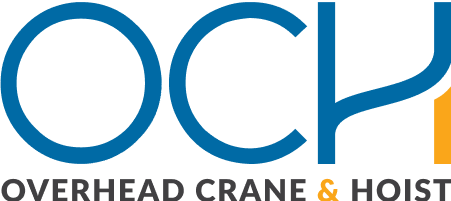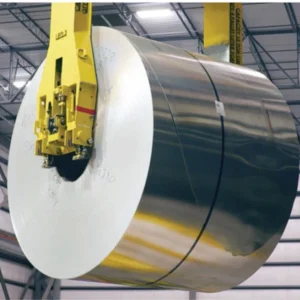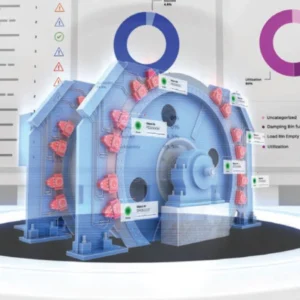As an accredited standards developer for the American National Standards Institute (ANSI), MHI and its industry groups produce consensus-based, voluntary standards. Among the groups developing standards that promote safety, consistency and reliability in material handling equipment is the Monorail Manufacturers Association (MMA). This year, the group completed significant revisions to the MMA ANSI standards, applying to both workstation cranes and monorails.
ANSI MH27.1 is for patented track underhung workstation cranes and monorails. Featuring an inverted-T profile, patented track systems offer both high strength and low deadweight. These characteristics permit the creation of long track spans with minimum load transfer to the support structure. That allows the systems’ under-running trolleys to handle and move loads of up to 40t.
ANSI MH27.2 is for enclosed track underhung workstation cranes and monorails. These systems consist of fully contained track sections that provide a smooth-running surface for the wheels of underhung trolleys. The enclosure also prevents the collection of dirt and debris that could prevent the wheels from rolling easily. Depending on the design and track material used, enclosed track systems can handle and transport loads weighing up to 3t.
“While ANSI itself does not create standards, its guidance ensures a transparent, consensusdriven development process,” explained Lee Bailey, manager of manufacturing integration and engineering at MMA member Schmalz. Bailey is also the current president of MMA.
“That guidance ensures that all ANSI standards – including MMA’s – reflect broad industry collaboration and technical precision,” he continued. “Therefore, they are more relevant and useful for crane manufacturers, engineers, specifiers and end users.”
Why MMA revised the standards
Like all ANSI-accredited standards, MH27.1 and MH27.2 must undergo formal review every five years. This cycle ensures the content remains technically sound. It also confirms alignment with advances in technology, safety and industry best practices.
“For this latest update, MMA opted to revise – rather than reaffirm – the standards,” Bailey said. He pointed to several reasons:
- Updated ANSI formatting: “ANSI now requires a more uniform structure and legalistic language usage,” he said. “The updated MMA ANSI standards now use ‘shall be’ and ‘must be’ consistently to ensure clarity and enforceability.”
- Modernised references: Previous editions of MH27.1 and MH27.2 cited other standards dating back to the 1990s, noted Bailey. “The MMA team updated references to external standards to their most current versions. We also verified their continued applicability.”
- Obsolete content eliminated: MMA’s standards review committee removed details about a handful of outdated technologies no longer in use.
- Harmonisation with CMAA standards: Many MMA members also participate in the Crane Manufacturers Association of America (CMAA), Bailey added. “To ensure consistency, overlapping content – definitions, terminology and design principles – now aligns across both associations’ standards.”
A collaborative, two-year effort
Revising MH27.1 and MH27.2 took more than two years. A dedicated engineering committee within MMA – made up of crane manufacturers, engineers and technical experts – led the review and rewrite process. Their work was reviewed and coordinated through ANSI’s canvass process. This review requires representation and input from diverse interest groups, including:
- manufacturers
- users
- academics and researchers
- regulatory or governmental bodies
- general interest representatives.
“Each proposed change was subject to public comment and review,” Bailey added. “The MMA engineering committee then evaluated every suggestion, accepting those that strengthened the standard and explaining the rationale behind any rejections. Both standards went through two full canvass rounds before receiving final approval.”
What the updates mean for buyers and specifiers
For crane owners and those considering an investment in overhead lifting systems, the revised standards are a mark of quality assurance, said Bailey.
“The updated MMA ANSI standards reflect the real-world experience and engineering insight of monorail and workstation crane manufacturers,” he explained. “In fact, the standards’ contributors produce more than 80% of the equipment in this segment of the market in the US.”
Primarily written for designers and manufacturers, end users benefit from understanding the standards with which their equipment complies. Buyers should ask potential suppliers:
- Which standards do these monorail or workstation cranes follow?
- Is the manufacturer using the most up-to-date version of the MMA ANSI standards?
- Is the manufacturer a member of MMA or CMAA, and do they certify adherence to ANSI standards?
“There is no enforcement agency policing manufacturing of overhead lifting equipment,” Bailey added. “Therefore, purchasing from a supplier that adheres to the latest ANSI standards is one of the most effective ways to ensure safe, highquality equipment.”
Unified marketing under the overhead alliance
In a related development, the MMA now shares marketing and educational efforts with CMAA and the Hoist Manufacturers Institute (HMI) through the Overhead Alliance. This collective effort serves to better inform the industry about overhead lifting equipment. The Overhead Alliance is planning to offer a combined standards package. This will allow buyers and specifiers to purchase multiple standards together, noted Bailey.
“The Overhead Alliance’s collaborative approach supports a unified message about safety, reliability and performance in overhead lifting systems,” he said. “It also reinforces the value of industry developed standards across multiple product categories.”





